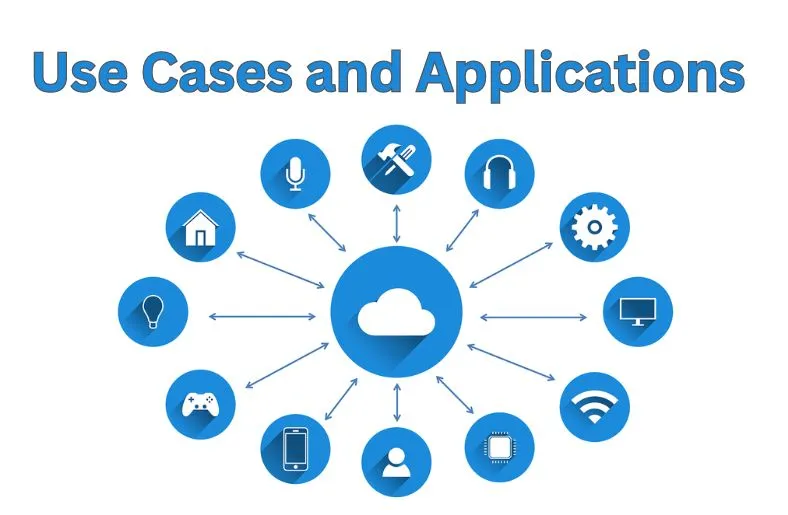Introduction to SSIS 816
Welcome to the forefront of modern data integration solutions with SSIS 816. In today’s fast-paced digital landscape, businesses require agile tools that can seamlessly handle the complexities of data management. SSIS 816 emerges as the ultimate solution, empowering organizations to harness the full potential of their data assets.
SSIS, or SQL Server Integration Services, has undergone a significant evolution with the release of version 816. This latest iteration represents a leap forward in terms of functionality, performance, and scalability. It offers a comprehensive suite of features designed to streamline data integration processes, making it easier than ever to extract, transform, and load data from diverse sources.
With SSIS 816, organizations can achieve unparalleled efficiency in managing their data workflows. Whether it’s orchestrating ETL processes, automating data transformations, or ensuring data integrity, SSIS 816 provides the tools and capabilities needed to drive business success in today’s data-driven world.
In this article, we will delve deep into the various aspects of SSIS 816, exploring its key features, advantages, use cases, and more. Join us on a journey to discover how SSIS 816 can revolutionize your approach to data integration and propel your organization towards greater insights and competitiveness.
Evolution of SSIS
The evolution of SQL Server Integration Services (SSIS) is a testament to Microsoft’s commitment to meeting the ever-changing needs of the data management landscape. Since its inception, SSIS has continuously evolved, adapting to technological advancements and industry trends to remain at the forefront of data integration solutions.
With each new version release, SSIS has introduced groundbreaking features and enhancements, refining its capabilities and performance. From its early days as a rudimentary data integration tool to the sophisticated platform it is today, SSIS has undergone a remarkable transformation.
Over the years, SSIS has expanded its repertoire to include robust ETL functionalities, comprehensive workflow automation, and seamless connectivity options. These advancements have enabled organizations to tackle increasingly complex data challenges with ease, driving efficiency and innovation across industries.
As we explore the evolution of SSIS, we witness its journey from a niche tool to a cornerstone of modern data integration strategies. With version 816, SSIS continues to raise the bar, empowering businesses to unlock new insights and opportunities in an era defined by data-driven decision-making.
Key Features of SSIS 816
SSIS 816, the latest iteration of SQL Server Integration Services, introduces a plethora of cutting-edge features tailored to meet the dynamic demands of modern data integration. Let’s delve into some of its key features that set it apart from its predecessors:
- Enhanced ETL Capabilities: SSIS 816 offers powerful Extract, Transform, Load (ETL) functionalities, allowing organizations to seamlessly separate, transform, and load data from diverse sources. Its intuitive interface simplifies complex data integration workflows, enabling efficient management of structured and unstructured data.
- Workflow Automation: A hallmark feature of SSIS 816 is its robust support for workflow automation. Users can schedule and execute data integration tasks with precision, reducing manual effort and ensuring consistent performance. Automated workflows streamline operations, improve efficiency, and minimize errors.
- Scalability and Performance: With support for parallel execution and distributed processing, SSIS 816 scales effortlessly to handle large volumes of data. Its optimized performance ensures swift processing and minimal latency, enabling organizations to meet stringent processing deadlines and enhance productivity.
- Comprehensive Connectivity: SSIS 816 offers extensive connectivity options, facilitating seamless interaction with various data sources and destinations. Whether it’s relational databases, cloud services, or big data platforms, SSIS provides robust connectors to facilitate smooth data transfer and integration.
- Flexible Design Interface: SSIS 816 boasts a flexible workflow design interface, empowering users to construct and modify integration processes with ease. Its drag-and-drop functionality simplifies workflow creation, catering to both novice users and seasoned developers. The intuitive interface fosters collaboration and accelerates development cycles.
In summary, SSIS 816 combines advanced features, scalability, and reliability to deliver a comprehensive data integration solution tailored to the needs of modern enterprises. With its rich feature set and intuitive design, SSIS 816 empowers organizations to unlock the full potential of their data assets and drive innovation in a data-driven world.
Advantages of SSIS 816
SSIS 816 offers a myriad of advantages that position it as a leading solution in the realm of data integration. Here are some key benefits of leveraging SSIS 816:
- Flexibility and Customization: SSIS 816 provides unparalleled flexibility, allowing users to tailor data integration workflows to suit specific business requirements. Its modular architecture enables the incorporation of custom components and scripts, facilitating the seamless integration of diverse data sources and formats.
- Scalability and Performance: With its support for parallel execution and distributed processing, SSIS 816 scales effortlessly to handle large volumes of data. Organizations can process millions of records with optimal performance, ensuring swift and efficient data integration even in the face of increasing data volumes.
- Reliability and Fault Tolerance: SSIS 816 boasts robust error handling and logging capabilities, ensuring reliable execution of data integration workflows. Users can configure fault tolerance measures, retry logic, and transactional integrity to guarantee data consistency and minimize disruptions during package execution.
- Seamless Connectivity: SSIS 816 offers extensive connectivity options, enabling seamless interaction with diverse data sources and destinations. Whether it’s relational databases, cloud services, or legacy systems, SSIS provides connectors to facilitate smooth data transfer and integration.
- Enhanced Productivity: By automating repetitive tasks and workflows, SSIS 816 enhances productivity and minimizes manual effort. Users can schedule jobs, monitor execution status in real-time, and streamline data integration processes, thereby optimizing resource utilization and accelerating time-to-insight.
In conclusion, SSIS 816 empowers organizations to streamline data integration processes, unlock actionable insights, and drive informed decision-making. Its flexibility, scalability, and reliability make it a preferred choice for enterprises seeking to harness the power of their data assets effectively.
Use Cases and Applications
SSIS 816 finds application across various domains and industries, serving as a critical component in data management, business intelligence, and ETL processes. Here are some common use cases and applications of SSIS 816:
- ETL Processes: SSIS 816 streamlines the extraction, transformation, and loading of data into data warehouses or analytical systems. Organizations leverage SSIS to integrate data from disparate sources, cleanse and transform it, and load it into target systems for analysis and reporting.
- Data Warehousing: SSIS facilitates the integration and consolidation of data from multiple sources into a centralized data warehouse. By orchestrating the movement of data between databases, flat files, and cloud services, SSIS enables organizations to create a unified view of their data for reporting and analysis purposes.
- Business Intelligence: SSIS plays a pivotal role in extracting insights from raw data, enabling informed decision-making and strategic planning. Organizations use SSIS to cleanse and transform data, perform complex calculations and aggregations, and load it into BI tools for visualization and analysis.
- Real-Time Data Integration: In industries such as e-commerce and finance, real-time data integration is crucial for making timely decisions. SSIS 816 supports real-time data integration, allowing organizations to capture, process, and analyze data as it becomes available, enabling faster response times and proactive decision-making.
In summary, SSIS 816 enables organizations to address a wide range of data integration challenges, from simple ETL processes to complex real-time data integration scenarios. Its versatility, reliability, and scalability make it a valuable asset for organizations seeking to unlock the full potential of their data assets.
Comparison with Other Data Integration Tools
When comparing SSIS 816 with other data integration tools in the market, several factors come into play:
- Functionality: SSIS 816 offers a comprehensive set of features for data integration, including robust ETL capabilities, workflow automation, and extensive connectivity options. Compared to alternatives like Informatica and Talend, SSIS provides similar functionalities but with tighter integration with the Microsoft ecosystem and seamless compatibility with SQL Server, making it a preferred choice for many organizations.
- Performance: SSIS 816 excels in terms of performance optimization, with support for parallel execution, distributed processing, and in-memory data processing. While other tools may offer similar performance capabilities, SSIS’s scalability and reliability make it well-suited for handling large volumes of data and orchestrating complex data workflows efficiently.
- Cost-effectiveness: In terms of cost-effectiveness, SSIS 816 stands out due to its inclusion as part of the SQL Server suite, making it a cost-effective option for organizations already invested in Microsoft technologies. While other tools may offer competitive pricing, the seamless integration with SQL Server and the availability of licensing options tailored to specific business needs make SSIS a compelling choice for organizations looking to maximize their investment in data integration solutions.
- Ease of Use: SSIS 816 boasts an intuitive user interface and a wealth of documentation and community support, making it accessible to both novice and experienced users. While other tools may offer similar ease-of-use features, SSIS’s familiarity within the Microsoft ecosystem and its integration with familiar tools like SQL Server Management Studio (SSMS) contribute to its user-friendly appeal.
In summary, while there are several data integration tools available in the market, SSIS 816 distinguishes itself through its functionality, performance, cost-effectiveness, and ease of use, making it a preferred choice for organizations seeking a comprehensive and reliable solution for their data integration needs.
How to Get Started with SSIS 816
Getting started with SSIS 816 is straightforward and user-friendly. Follow these steps to kickstart your journey:
- Installation: Begin by installing SQL Server Integration Services alongside SQL Server Management Studio (SSMS) on your system.
- Configuration: Once installed, configure SSIS 816 by setting up connections to your data sources, defining package parameters, and configuring execution options using SSMS.
- Resources for Learning: Take advantage of Microsoft’s comprehensive documentation, tutorials, and online courses to familiarize yourself with SSIS 816. Additionally, engage with community forums and user groups for valuable insights and best practices.
With these steps, you’ll be well on your way to harnessing the power of SSIS 816 for your data integration needs.
Future Trends and Developments
Looking ahead, the future of SSIS 816 is promising, with continuous advancements and enhancements anticipated. Key trends to watch out for include:
- Cloud Integration: Expect greater integration with cloud services such as Azure Data Factory for hybrid and multi-cloud scenarios.
- AI and Machine Learning: Anticipate the integration of AI-driven capabilities for data cleansing, enrichment, and predictive analytics.
- Containerization: Watch for support for containerized deployments, enabling portability and scalability in modern IT environments.
By staying abreast of these developments, users can leverage SSIS 816 to stay ahead in the ever-evolving landscape of data integration.
Conclusion
In conclusion, SSIS 816 emerges as a robust data integration solution, offering unparalleled flexibility, scalability, and reliability. With its advanced features, seamless connectivity, and intuitive interface, SSIS 816 empowers organizations to streamline data workflows, unlock actionable insights, and drive informed decision-making. From enhanced ETL capabilities to real-time data integration, SSIS 816 caters to diverse use cases across industries, making it a preferred choice for modern enterprises. As the data landscape continues to evolve, SSIS 816 remains poised to adapt and innovate, enabling organizations to stay ahead of the curve and harness the full potential of their data assets.






